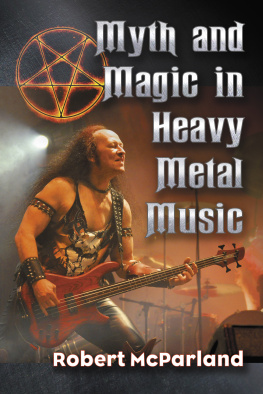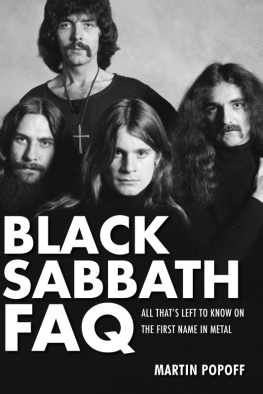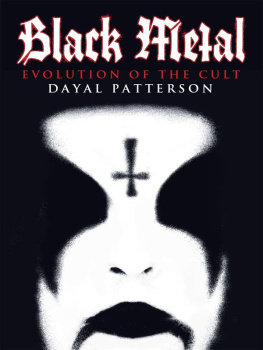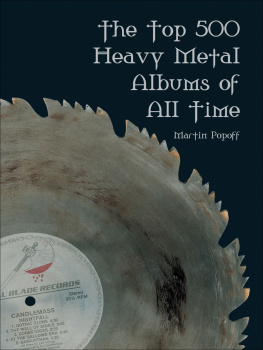Introduction
Mystical Black Metal Theory
Come to the cryptic tombs, hear their call.
Inquisition, Strike of the Morning Star, Nefarious Dismal Orations (2007)
Quand io mi volsi, tu passati l punto | al qual si traggon dogne parte i pesi. [When I turned myself you passed the point to which all weights are drawn from every part].
Dante, Inferno XXXIV. 1101
Pondus meum amor meus. [My weight is my love]
Augustine, Confessions
Black metal theory is an amorphous metallectual movement which was initiated in 2009 with the symposium Hideous Gnosis. This volume brings together the authors earlier and newer work on black metal theory focusing on mysticism, a domain of thought and experience with deep and essential connections both to the black metal genre and to theory ( theoria = vision, contemplation). More than a topic for black metal theory, the mystical is here explored in continuity with the intersection of black metal and theory. Accordingly, the volume spans two kinds of writing: 1) theoretical essays on black metal; and 2) essays and interviews about black metal theory. Within this framework, the book is less a heterogeneous assemblage than a forward-looking retrospective synthesis which reveals a constellation of inherently related principles. The reader is advised to look on this collection as a multiform gesture pointing both from and towards what black metal theory might be, rather than an exemplification of what black metal theory is. Our intention is not to erect an edifice, but to break ground, as for a crypt. What matters above all is the exploration of a number of principles which the authors consider essential to black metal theory and which have become clearer in the organization of this volume. These principles, outlined below by means of a circuitous archaeology, go to define black metal theory as the floating tomb wherein black metal levitates into the visionary experience, both affective and intellectual, that it already is.
The visionary concept of a floating tomb is here drawn simultaneously from the music of Inquisition and from the medieval Christian motif, as found in legends of Muhammad and Thomas the Apostle. Overall, the motif pertains to the doubly inversive movement of mystical will wherein spiritual ascent into the divine coincides with the death of God, as expressed in a couplet by Angelus Silesius: Love like a magnet is, it draws me into God, | And what is greater still, it pulls God into death . sings:
Night of the black sorrowfull moaning winds blowing.
Through these melancholic woods how I feel so dead here,
Sad and cold as I hear crypt sounds of moan.
Only thought of sorrow bring me down to the pits of bottomless black.
In this endless extreme tomb of weeping sadness,
I am embraced by the cosmic force of night.
To this black metal night we may compare the dark night of the soul described by John of the Cross, the night which engulfs souls in its secret abyss and causes them to feel that they have been led into a remarkably deep and vast wilderness unattainable by any human creature. In Force of the Floating Tomb, the invocational opening of Obscure Verses for The Multiverse , the tombs force is identified with gravitation as a godly power, a cosmic might that black metal unleashes in the sacrificial mode of a raised chalice:
Moons of titans, dead black sphere
Lord of skies, silent altar
Esoteric floating tomb
Like a shroud of the heavens
In the shadows of its craters
On the mountains of its ruins
Solar rays carve its valleys
Endless graves reign in caves
Raise the Chalice!
Strong as lightning is the force
Gravitation force of gods
Invocation of its mass
As a spirit floats and mourns
Raise the chalice!
The chalice, ritual symbol of spiritual flow between earthly and heavenly spheres, and more specifically, the elevation of the lower via receptivity to the higher, Likewise, black metal is theory in the sense of affective-intellectual experience that reveals by re-veiling everything in its own obscurity. As Inquisition make clear, the tomb it floats is you :
Black Metal is about chanting to the occult forces of nature, our spirit, our universe without believing any one single man made god no matter how convincing they want to appear to be. We do not close our third eye and simply believe. On the contrary we want to learn more, seek more to find the secrets that the cosmic veil hides from us or maybe even those who do know hide from us. [] These songs are the rituals of obscure verses, songs to carry you into a journey of thought and reflect while the hymns of Black Metal enshroud you, obscuring your surroundings allowing you to see further into your own cosmos and the one that surrounds you.
More cryptically, Inquisitions floating tomb evokes a medieval Christian motif with deep thematic resonances to black metal as a Satano-Petrine musical art of religious inversion, mystical profanation, and spiritual suspension. In the Liber Nycholay , a thirteenth-century anti-Islamic life of Muhammad which follows in the tradition of portraying him as a schismatic and apostate Christian, the tomb is described as follows:
Then they made a tomb [ arcam ] covered in gold and placed the foot [of Muhammad] inside, anointed with balsam and wrapped with spices [] All Saracens make pilgrimage to Mecca and venerate there the foot in the tomb, the foot of Muhammad. Truly, the ark is held suspended in the air and is drawn by three great stone magnets hanging above it on chains, for the ark is not covered with gold in the part where the magnets influence it from above. Many simple-minded Saracens believe that this is made to occur not artificially, but by a greater power. [] Just as Christians believe the Roman pope to be the vicar of Jesus Christ, so the Saracens believe the caliph of Baghdad to be a vicar. And as Christian believe Jesus Christ to be the son of God, so the Saracens believe Muhammad to be the messenger and prophet of the Most High Creator and to be saved through him before God.
The ideological significance of the legend operates through a mimetic inversion typical of this polemical tradition, whereby the similarities of Islam to Christianity only betray the formers inherent falseness and fraudulence. As Akbari observes, the legend describe[s] the floating tomb of Muhammad, suspended in a parodic imitation of the true bodily ascent of Christ. This tomb, filled with the bones of the pseudo-prophet, is a carnal imitation of the divinely empty Holy Sepulchre; its apparently miraculous weightlessness is no manifestation of divinity, but simply a deceptive trick. so does the shifting point of similitude around which its parodic inversion turns expose religious identity to the double spectre of relative truth and falsehood. Muhammads floating tomb haunts Christianity with the falseness of Islam and it haunts Islam with the truth of Christianity. The inversion of parody also suspends , so that the figure of the floating tomb, beyond the shiny ideological surface, carries its own form of magnetic force, one that can neither be ignored nor decided. In one direction, it pulls towards understanding the corruptibility and contingency, if not outright falseness, of all religious traditions. In the other direction, it pulls towards understanding the spiritual universality of their truth, the divine reality to which any religion can at most only point.
Black metal, on the whole, follows a parallel design, doing to modern Christianity what medieval Christianity does to Islam, profaning its adversary in a manner that affirms yet also obscures the grounds of its own authority. In fact, the emerging genre of anti-Islamic black metal finds itself recapitulating Western medieval views, cursing Muhammad as false prophet and so forth. Indeed the fifteenth-century pilgrimage narrative of the Dominican theologian Felix Fabri, burying the legend so as to preserve its truth, describes the telluric hyper-crypting of the prophets tomb, in recapitulation of Lucifers fall from heaven to earth, by means of a divine storm:








